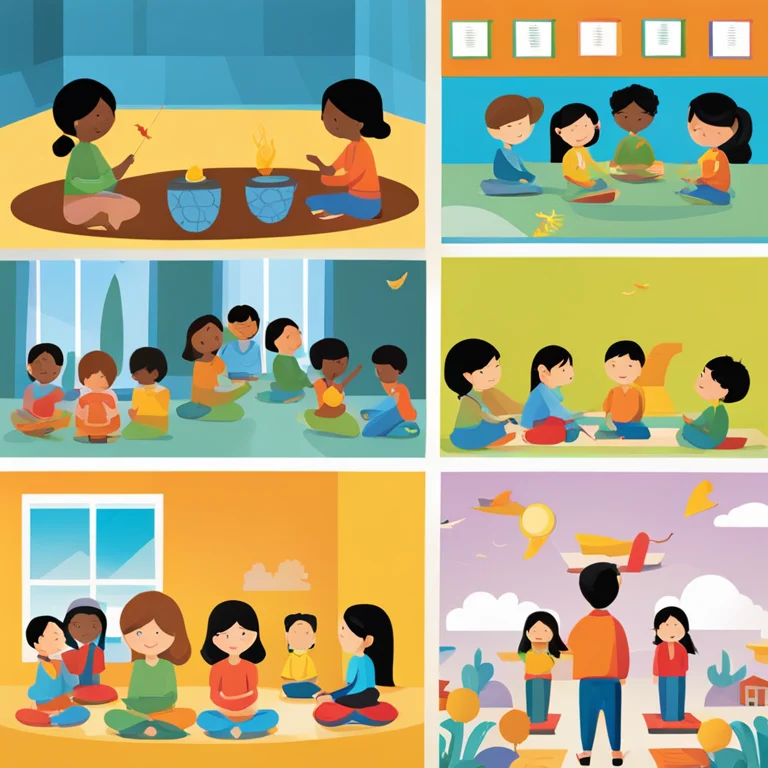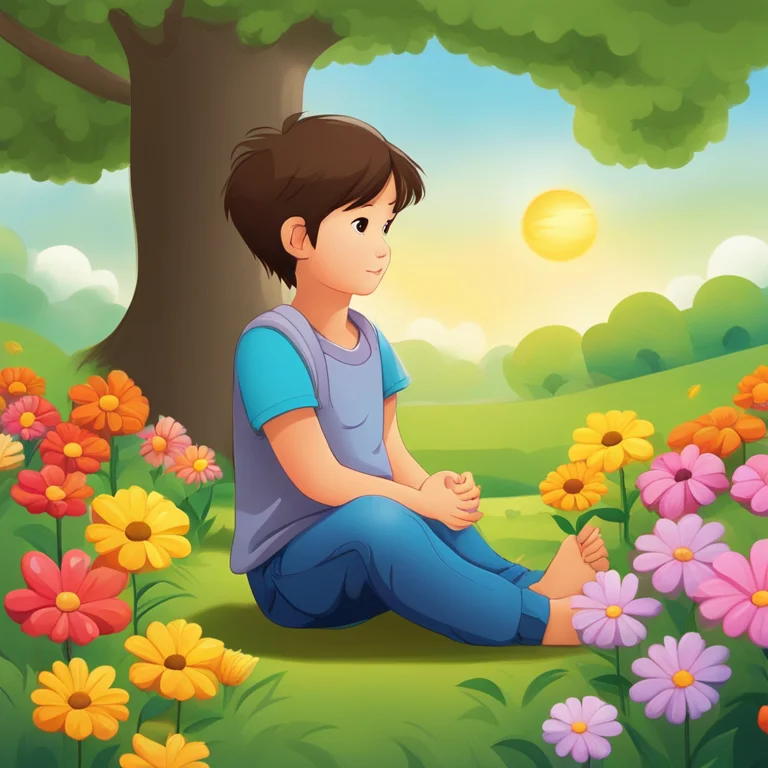
Mindful Moments for 1st Graders
Discover simple mindfulness meditation techniques to nurture calmness and focus in first graders, enhancing their learning and well-being.
article by Hina Kurosawa
Introduction to Mindfulness in Childhood
Mindfulness might seem like a practice best suited for adults, but even children, especially those in their formative years like first graders, can reap the benefits of this calming technique. Introducing mindfulness meditation to young learners helps them manage stress, boosts attention, and improves emotional regulation. Building a foundation of mindfulness at this age lays the groundwork for lifelong skills in managing challenges and appreciating moments fully. Schools in 2024 increasingly recognize these benefits and are incorporating mindfulness activities into their curriculum.

Benefits of Mindfulness for Young Learners
Mindfulness meditation has numerous advantages for children in their early educational journey. It can strengthen concentration, patience, and empathy, allowing children to be better learners and friends. Research in the field of educational psychology suggests that mindfulness can lower anxiety levels in children, leading to a more harmonious classroom environment. Moreover, with screen time on the rise, mindfulness practices serve as a form of digital detox, promoting healthier, more active lifestyles.

Creating a Mindful Classroom
Setting up a mindful classroom environment is key to fostering a meditation routine among first graders. This can be achieved by dedicating a quiet corner of the room for mindfulness exercises, displaying calming colors, and using soft textures. Teachers can initiate short, guided meditations daily, using age-appropriate language and concepts. Visual aids, such as calming jars or breathing boards, are incredibly useful tools in helping young ones understand and practice mindfulness.

Simple Mindfulness Exercises
The mindfulness exercises for first graders don't need to be complex. They can be as simple as mindful breathing, where children focus on the sensation of air entering and exiting their nostrils, or a body scan, teaching them to be aware of different parts of their body and the feelings associated with them. Mindful eating, listening, and walking are other activities that can easily be integrated into their daily school routine, each exercise lasting just a few minutes to hold their attention.

Parental Involvement in Mindfulness
Parents can also play a pivotal role in sustaining mindfulness practices outside school hours. Encouragement at home to engage in meditation and quiet play can strengthen a child's mindfulness abilities. Families might allocate a special time each day for sharing and practicing mindfulness together. This not only bolsters the child’s practice but also encourages a mindful lifestyle within the family unit, promoting overall domestic tranquility.
Challenges and Considerations
While the cultivation of mindfulness in young students is beneficial, educators face challenges such as maintaining consistency and ensuring inclusivity in their approach. Not all children may embrace mindfulness equally, and adaptations may be required for those with attention or sensory processing difficulties. Teacher training programs have thus begun to include modules on mindfulness, ensuring that educators are well-equipped to deliver these practices in the most engaging and inclusive ways.
Published: 1/9/2024
Modified: 1/9/2024
More predictions
Come back here soon to learn more about yourself and your future


The Fusion of Meditation and Yoga for Inner Peace
Discover how the synergy of meditation and yoga can enhance mindfulness and bring tranquility to your life in today's fast-paced world.


The Essential Guide to Choosing Your Meditation Chair
Discover the key aspects to consider when selecting the perfect meditation chair for enhanced comfort and focus during your mindful practices.


The Ideal Meditation Chair: Elevate Your Practice
Discover the features and benefits of the perfect meditation chair to deepen your spiritual practice and enhance comfort during sessions.